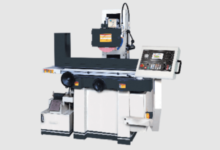How to Conduct a Thorough Prior Art Search: A Step-by-Step Guide

When it comes to patenting an invention, conducting a thorough prior art search is one of the most critical steps. This search determines whether an invention is truly novel, non-obvious, and eligible for patent protection. In today’s innovation-driven environment, intellectual property (IP) is a valuable asset, and securing a strong patent is key to protecting that asset. A prior art search not only helps ensure the uniqueness of the idea but also mitigates the risk of patent invalidation in the future. It is an essential process for inventors, businesses, and law firms who want to establish robust IP portfolios and avoid costly litigation.
In 2025, the importance of conducting effective prior art research is more evident than ever. A well-conducted search provides clarity on the patentability of an invention, allowing inventors and companies to move forward with confidence. This guide walks through the essential steps involved in performing a comprehensive prior art search, ensuring that your invention stands a strong chance of being patented.
What Qualifies as Prior Art?
Prior art encompasses a broad range of materials that could affect the patentability of an invention. This includes both formal and informal sources that have been publicly disclosed before the patent application is filed. The most common sources of prior art include patent documents, non-patent literature, and public disclosures.
Patent documents are an obvious source of prior art. These include previous patents or applications that may cover the same or similar technology. These documents can reveal key insights into the scope of existing innovations and their limitations, which is important when evaluating a new invention’s uniqueness.
Non-patent literature (NPL) is another crucial source of prior art. Research papers, technical journals, and books can offer valuable information regarding the state of the art in any given field. Non-patent literature also includes presentations at academic conferences or published articles that describe similar technological developments.
Public disclosures play a vital role as well. Anything that has been disclosed to the public, such as product demos, social media posts, videos, or product launches, could also be considered prior art. These types of disclosures often carry significant weight when determining if an invention is novel and non-obvious.
The Role of Prior Art in Patentability
The primary purpose of conducting a prior art search is to assess the patentability of an invention. There are two major aspects of patentability that are directly influenced by prior art: novelty and inventive step.
Novelty is the requirement that the invention must be new, meaning it has not been disclosed in any prior art. A thorough prior art search helps determine if any prior publications, patents, or other public disclosures exist that describe the invention or its components. If similar inventions exist, it can prevent the grant of a patent.
The second key element is the inventive step, also known as non-obviousness. Even if an invention is novel, it must also be non-obvious to someone skilled in the art. This means that the invention cannot be a simple or expected modification of existing technology. A prior art search helps assess whether an invention is a non-obvious development over existing ideas, which is critical for patent approval.
Preparing for Your Prior Art Search
Before diving into the search process, preparation is key to ensuring that your efforts are effective and targeted. The first step is to define the invention’s core features and the technical problem it aims to solve. A clear understanding of what makes the invention unique will help narrow down the scope of the search and focus on the most relevant prior art.
Once the technical problem is defined, it’s important to set clear objectives for the search. Are you conducting a search to evaluate the novelty of the invention? Or are you focusing on freedom to operate (FTO) analysis to ensure that the invention does not infringe on existing patents? The search objectives will determine the resources, tools, and databases you will use during the process.
Equally important is assembling the right tools and resources. Patent databases, academic journals, and digital content repositories will serve as the foundation of your search. Leveraging a combination of these sources ensures a comprehensive approach to prior art research.
Identifying Key Concepts and Synonyms
One of the first steps in the prior art search process is to break down the invention into its key concepts and technical elements. Identify the most critical features that differentiate the invention from existing technologies. These elements will guide the search by serving as the main keywords and search terms.
After identifying the key components of the invention, generate a comprehensive list of keywords, synonyms, and related technical terms. Consider various technical jargons, abbreviations, and acronyms that may be used in patents or research papers. This list of search terms will form the backbone of your search queries and ensure that you don’t miss any potential prior art.
Selecting Search Platforms and Databases
The next step in preparing for a thorough prior art search is selecting the appropriate platforms and databases. Patent databases, such as those offered by the USPTO, EPO, or WIPO, provide access to global patent filings and are invaluable for patent searches. These databases allow you to look up patents from different countries, helping you identify whether similar inventions have been patented elsewhere.
In addition to patent databases, it’s important to explore non-patent literature. Academic databases such as Google Scholar, IEEE Xplore, or researchgate.net offer access to research papers and conference proceedings. Searching these sources helps uncover innovations that may not be documented in patent filings but could still affect patentability.
Step-by-Step Prior Art Search Process
Now that you’ve set the foundation, let’s dive into the step-by-step process of conducting a thorough prior art search.
Step 1 – Keyword and Boolean Search
Start by formulating effective search queries using the keywords and technical terms you’ve identified. Use Boolean operators like AND, OR, and NOT to combine terms and filter results. Boolean operators allow for a more precise search, narrowing down or expanding your search results depending on your needs.
Each database will have its search syntax, so adapting your search terms to each platform will ensure more accurate results. Be mindful of variations in spelling, terminology, and language that may impact the search results.
Step 2 – Classification-Based Search
Patent classification codes such as IPC (International Patent Classification) and CPC (Cooperative Patent Classification) can significantly improve the precision of your search. By selecting the appropriate classification code for the technology area you’re interested in, you can refine the search results and find relevant patents faster.
These classification systems group patents based on their technological fields. Understanding how to navigate these codes can help you find patents that might not come up in keyword searches alone.
Step 3 – Citation and Reference Analysis
Once you’ve identified relevant patents, look at the citations listed in these patents. Citations include references to earlier patents and publications, which may reveal prior art that wasn’t immediately evident in your search. Forward and backward citation tracking can uncover related patents and publications, expanding the scope of your search.
Step 4 – Competitor and Inventor Analysis
Reviewing patent portfolios of competitors or other inventors in the field is another valuable step. This can provide insights into existing trends, identify gaps in their filings, and highlight areas where your invention may offer a unique solution. Competitor analysis also helps to identify potential risks of infringement.
Step 5 – Non-Patent Literature Search
In addition to patents, academic papers, conference proceedings, and other forms of non-patent literature should be searched. These documents can offer important context for understanding the technological landscape and help identify prior disclosures that could affect the patentability of your invention.
Step 6 – Manual Review and Relevance Assessment
Once the search is completed, review the results manually. Not every document found will be relevant to your invention. Carefully assess each reference, considering its technical relevance, the novelty of the idea, and its potential impact on patentability. This review will ensure that only the most significant prior art is considered.
Leveraging AI and Automation in Prior Art Search
AI-powered tools are becoming increasingly useful in streamlining the prior art search process. These tools utilize natural language processing (NLP) and full-text similarity analysis to identify relevant patents and literature quickly. By automating certain aspects of the search, AI can save time and improve accuracy.
However, while automation is a great tool, human expertise is still essential for reviewing and interpreting the results. AI tools should be used as a complement to, rather than a replacement for, expert judgment.
Conclusion: Ensuring a Robust Prior Art Search in the Modern Era
A thorough prior art search is essential to securing a strong patent. By leveraging traditional search methods alongside AI tools, inventors and businesses can enhance their search accuracy and efficiency. With the right approach, a prior art search can ensure the strength of your IP and minimize the risk of patent challenges in the future.







